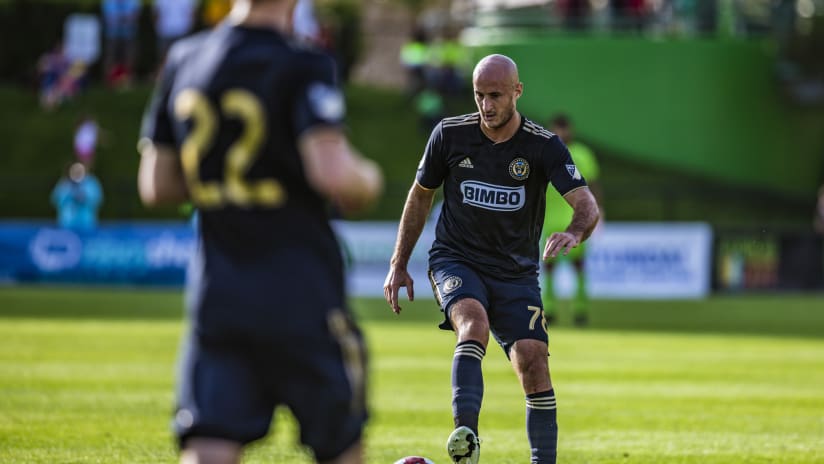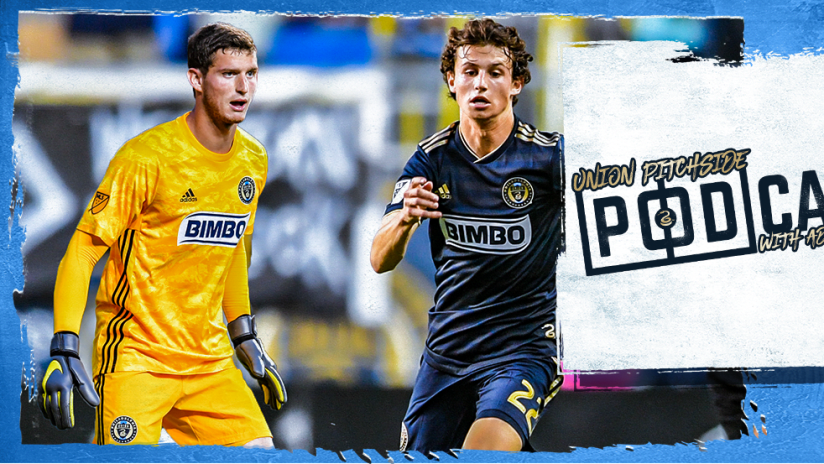One of the more intriguing aspects of the Vancouver Whitecaps vs Philadelphia Union match last Saturday, at least on paper, was that given their talent both teams should have a clear target to attack on the other side.
Vancouver was hoping the recent sparks they have seen from Alphonso Davies would spread into a full-fledged fire with another dominant display against Keegan Rosenberry, who has had an up-and-down defensive season. The Union had eyes on Brek Shea, an absurdly positionless player despite a resume that includes a stint in the English Premier League. Jim Curtin and Philadelphia got at Shea; Rosenberry, meanwhile, turned in a largely excellent performance.
The easiest way to knock Shea is to focus on his 1v1 defending, which is not good. But irony is not the friend of the Vancouver fullback, and those issues in isolation actually mask a far bigger issue: Positioning.
It is important to tease apart those two problems because they point to differing downstream consequences. If 1v1s are the biggie, then the Union could be expected to attack Shea primarily with Ilsinho’s flying feet. But if positioning is your shortfall, Borek Dockal is your menace. The Czech attacker spent the first half against Chicago dragging his defender all over the pitch once he realized he was being man-marked, and that same level of tactical intelligence allows him to sniff out holes in zonal defenses as well.
Vancouver’s biggest hole was between Shea and center back Doneil Henry. Shea would leave the back line to get close to Ilsinho, but Henry would not rotate across to close the space his fullback left behind. Partly, this was due to CJ Sapong occupying Henry, but often it was because Shea’s defensive movements are about as predictable as JR Smith’s decision-making in the NBA finals.
Here is Dockal noticing that Shea and Henry are uncoordinated early in the match. As he moves toward the space, however, Sapong also rolls off Henry’s shoulder and Shea begins dropping to cover.
This tells Dockal that Sapong is in control of Henry’s movements and that Shea is going to be very reactive defensively, so any movement around him is likely to garner a short-term response rather than a reliance on the team-wide tactics that should be his reference points as a defender.
A few minutes later, Dockal still has eyes for that space.
This time, he receives the pass and pulls Henry all the way out to the wing. This leaves Shea providing something vaguely resembling cover in the center. More generally, look at Vancouver’s defensive shape at the end of this clip. Henry has left the box, so any ball in to Sapong would give him a 1v1 chance to attack it against Jose Aja, for whom mobility is not a top trait. Additionally, there is space near the top of the box for a late runner, and Shea’s no-man’s-land positioning means the Union can easily create a 3v2 on the wing and draw someone else out of the box or pull a striker deep to defend, muffling the Whitecaps’ counterattack.
Keep all of this in mind when you watch Dockal’s movement on his first goal. After playing in a corner kick, he tracks back with the defensive line but stays well away from Shea, understanding that the defender is unlikely to re-establish good positioning unless Dockal becomes an obvious threat.
Indeed, when Ale Bedoya leaves the box, Shea remains incredibly narrow, inviting the long cross from Fafa Picault and barely recovering to weakly head it out to Ilsinho.
Once the ball moves toward Ilsinho, watch the movement of Dockal and compare it to that of Shea and Henry. Dockal immediately moves toward the ball, creating space between himself and Shea. Henry, meanwhile, has entirely switched off, so when Dockal collects the ball he is able to turn away from Shea and meet… absolutely nothing. Picking out the finish, then, is simply a matter of passing around Henry’s scrambling form.














